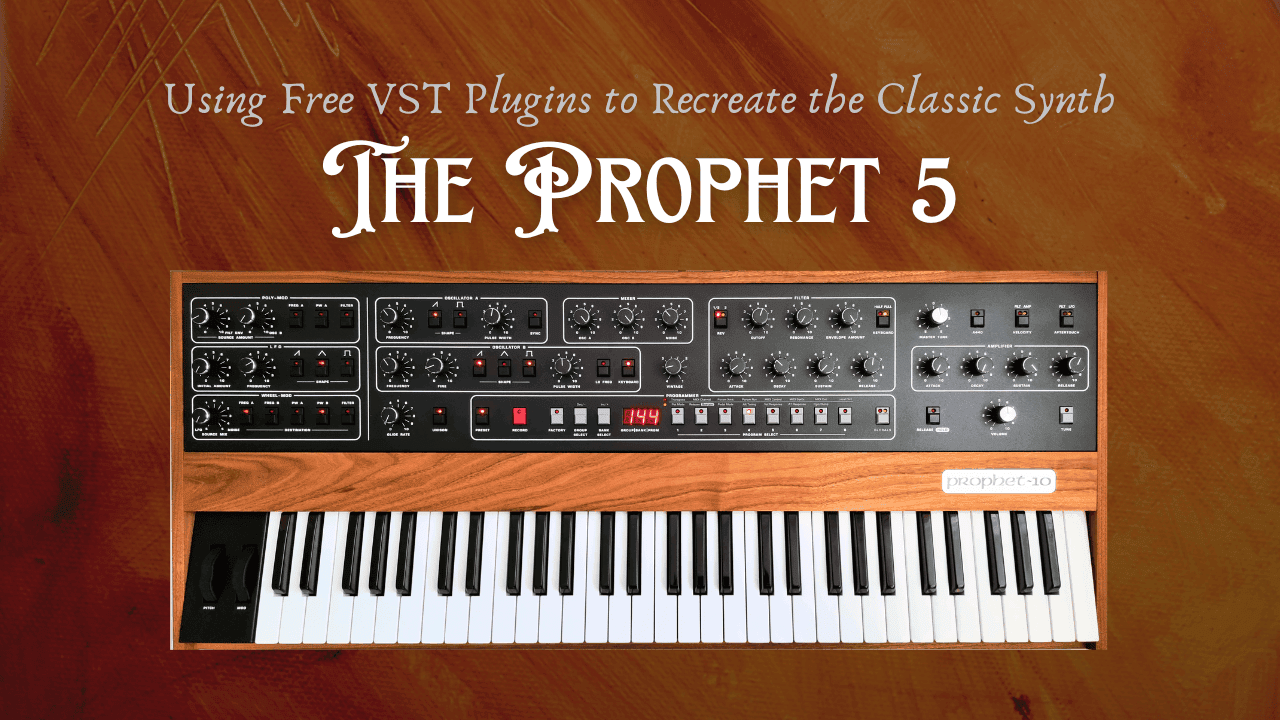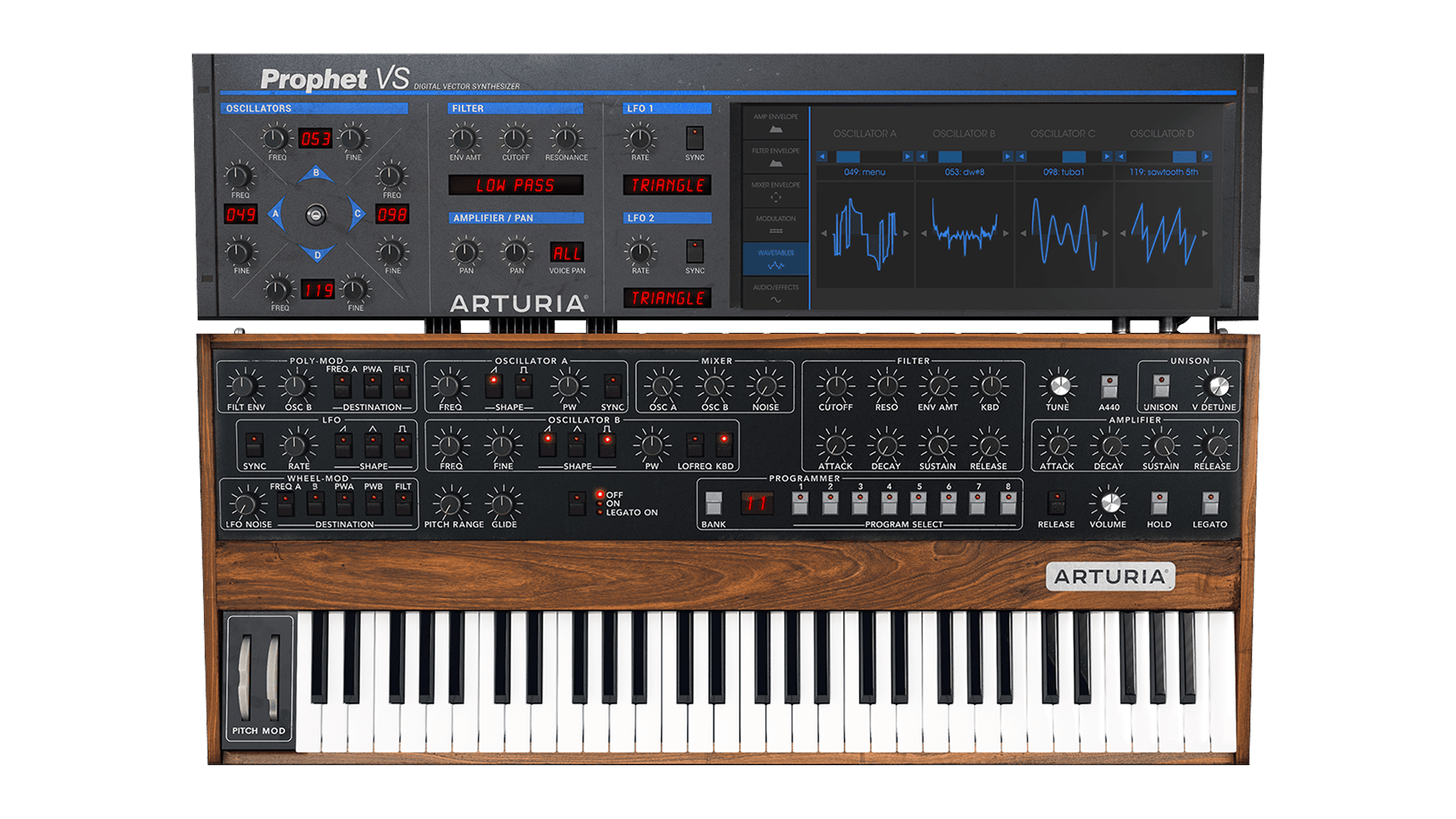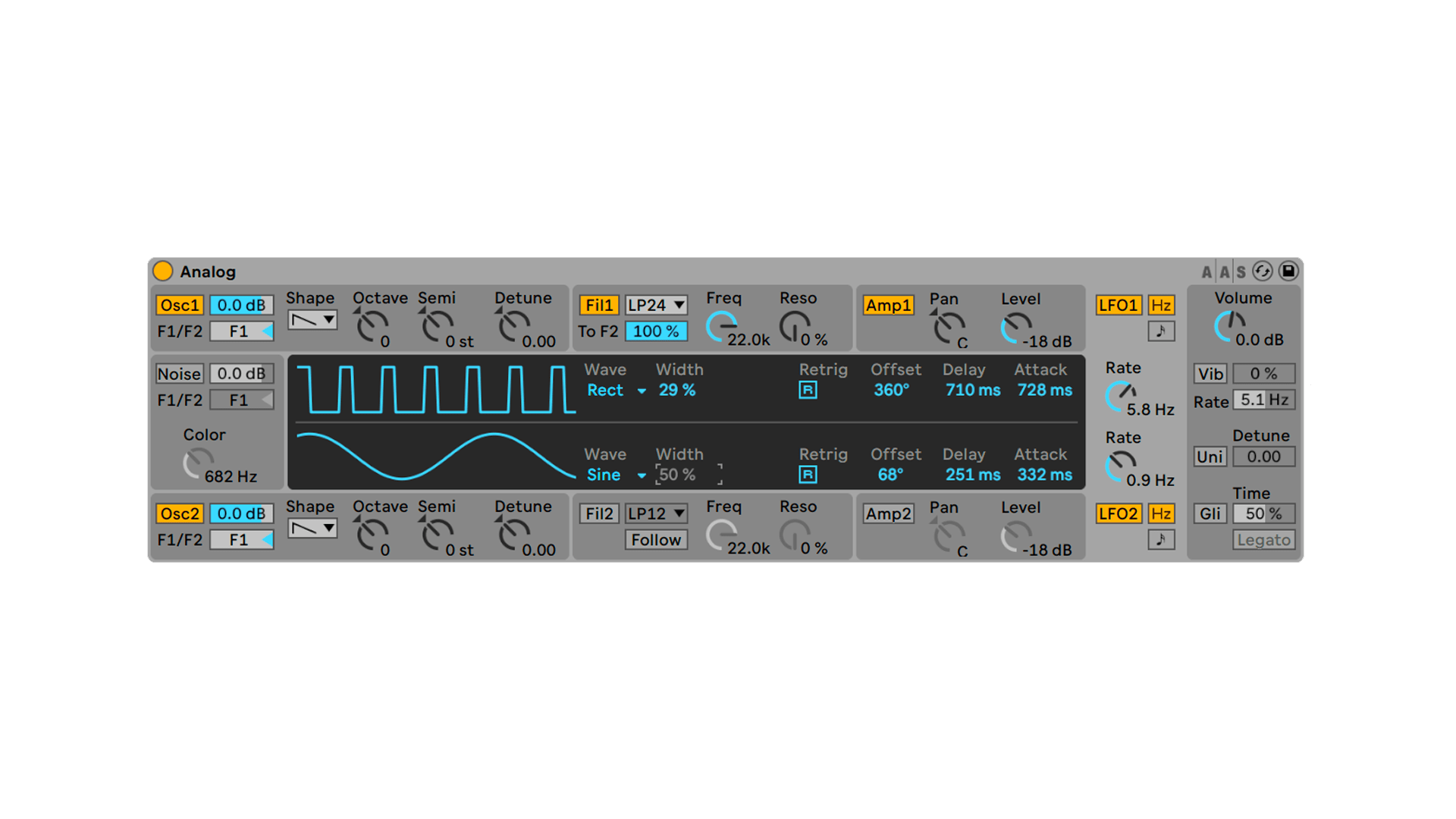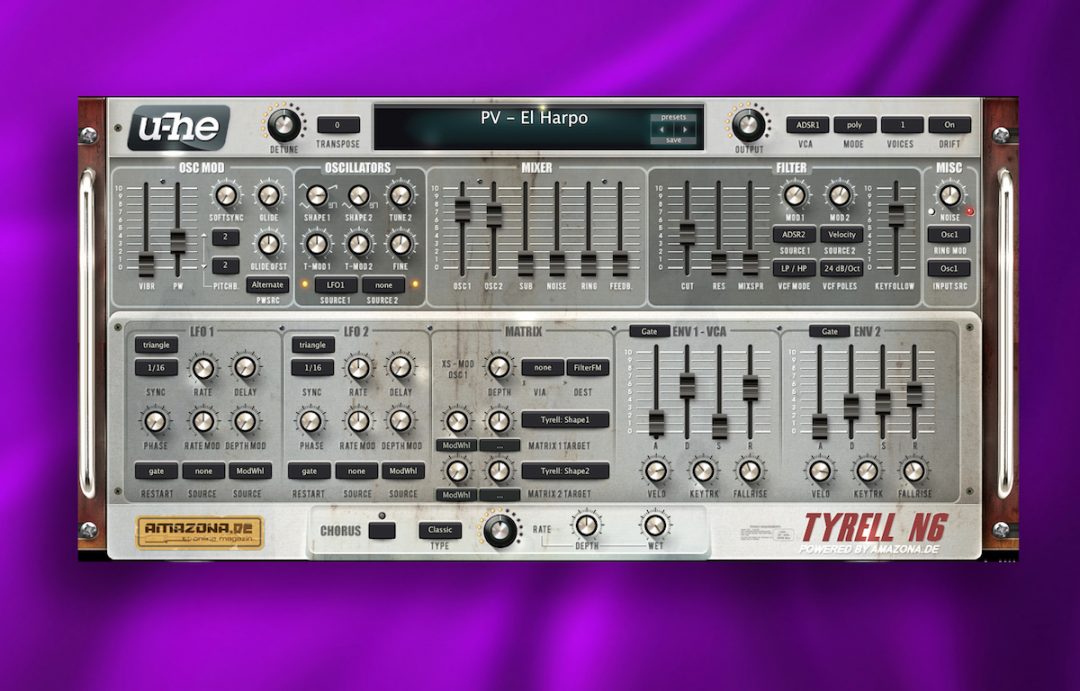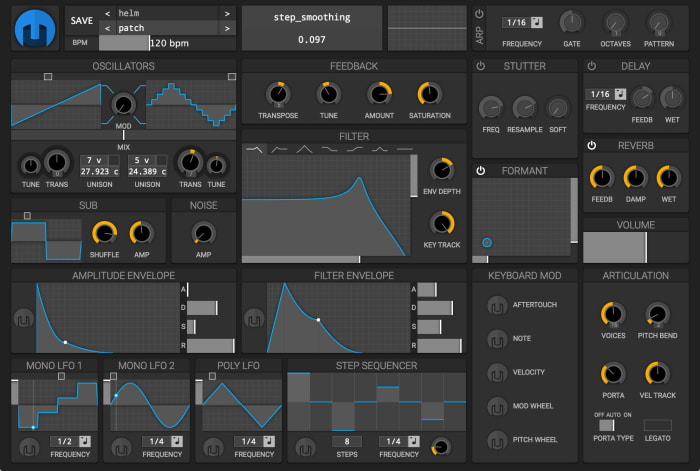The original Sequential Prophet 5 synthesizer remains a legendary instrument in the music industry even in 2024. During the 80s, it was a go-to synth in many hit-making studios, utilized by numerous iconic artists on chart-topping tracks.
Today, it continues to be a significant source of inspiration for modern synthesizers, owing to its pioneering of polyphony and intuitive tactile sound design. Its remarkable sound quality also remains unrivaled.
It’s not surprising that many aspiring producers are keen on obtaining an original Prophet 5 or recreating its sounds using modern technology.
In this article, we’ll explore the unique elements that contribute to the Prophet 5’s distinct sound and offer some cost-effective methods for replicating those sounds in your DAW (Digital Audio Workstation).
So, let’s dive in and discover its magic.
TL;DR: Ready to unravel the secrets of the Prophet-5 synth? This article explores its enduring legacy, showcasing how it shaped the sound of multiple music eras. Whether you’re a fan of its rich history or an artist looking to harness its vintage vibes, you’ll find plenty of inspiration here. And if you’re aiming to elevate your own music, our Buy SoundCloud Plays service can help boost your tracks’ reach and engagement on SoundCloud.
What exactly is the Prophet 5?
The Prophet 5 is an analog polyphonic synthesizer with 61 keys that was released in the 1980s by Sequential Circuits. The synth is notable for being the first to employ microprocessors capable of storing and recalling patch settings.
The synth includes sections for its oscillator mixer, amp envelope, filters, LFOs, and much more, as well as sections for its oscillator mixer, amp envelope, filters, LFOs, and much more.
A brief history of Prophet 5
Sequential sold out nearly soon after unveiling the Prophet 5—there were notoriously huge waitlists, and it may take months to get one built and sent to your studio.
Sequential couldn’t keep up and finally lost the trademark to Korg—the Prophet line of synthesizers went out of production.
However, the synth remained in great demand, and Sequential just recently re-acquired its trademark for the Prophet 5, implying that entirely new hardware editions of the synth are again available.
Sequential has also introduced a comparable series dubbed the Rev series, which is a re-release of the Prophet 5’s equivalent, the Prophet ’08.
It’s no surprise that many producers are interested in synthesizers these days, especially with all of the reissues of analog hardware becoming accessible.
What makes the Prophet 5 sound so good?
It was the first polyphonic synthesizer that allowed users to create sounds in real time and remember their settings for easy retrieval. This was a big step forward in synthesis since it allowed users to return to the identical patch they’d generated without having to start from scratch.
Aside from that, the instrument was painstakingly designed to sound fantastic.
Dave Smith, who invented the instrument, employed cutting-edge microprocessors at the time to build its original circuitry and enable patch saving.
The end product was a flexible synth that could be quickly transformed into a vast diversity of sounds and switch between patches with ease.
It was simpler than ever before to transition from airy pads to funky bass sounds to bristling leads, ushering in a new era of music creation.
The Prophet 5 today
Its original from the 1980s sells for a lot of money on antique gear websites. You’re looking at a minimum price of $10,000 before shipping and taxes, with no guarantees on the condition of the 40-year-old instrument.
Along with the Rev series, Sequential has issued a contemporary re-issue of the Prophet 5. Sequential is currently on Rev 4 of the Prophet 5.
The current Prophet 5 synthesizer is fantastic; it includes all of the original analog circuitry as well as all of the trappings of a modern synthesizer such as USB, digital MIDI, and some extra sound design elements such as a “vintage” knob and bigger patch banks.
Even yet, re-issued synthesizers command premium prices—you’ll need to spend a few thousand dollars if you want one of them in your studio.
What Prophet 5-inspired plugin is best for you?
However, if you’re on a tight budget, you don’t need to spend hundreds of dollars on hardware synthesizers.
With today’s current DAW, you can simply install software emulations of classic synthesizers for a fraction of the cost—and in many cases, for free.
There are a few commercial plugin re-creations of the Prophet 5 synth that does a decent job of accurately mimicking it.
However, if free is your best alternative right now, there are a few free synth plugins that will meet your demands.
Let’s have a look at some plugin possibilities for digitally recreating the synth in a DAW.
Best Prophet 5 plugin: Arturia
Arturia’s Prophet plugin is a prominent premium plugin that costs roughly $74—it’s certainly the greatest one out there, so if you’re willing to pay for a plugin, acquire this one.
Many have attempted to digitally mimic the Prophet 5’s sound, but Arturia’s rendition regularly receives positive feedback because it is the best at capturing the thick, punchy warmth of a true analog synth.
Furthermore, it is part of Arturia’s remarkable V-Collection, which features 28 accurate recreations of renowned vintage synthesizers.
Free Prophet 5 plugins: analog modeling synths
If free is your best option right now, you have a few options.
While Prophet-V still influences newer analog-style polysynths, if you know how to program them, flexible wavetable VSTs may offer you some Prophet flavor.
Just don’t expect the analog warmth, fatness, or punch of a genuine hardware machine.
Here are four free plugins that we believe do an excellent job of simulating analog synthesizers.
1. Ableton Analog
If you use Ableton, you may already have a powerful analog modeling synth at your disposal.
Ableton has worked hard to recreate the sound of analog circuits using actual physical modeling synthesis technologies.
Furthermore, with its large bank of carefully produced presets, you’ll immediately discover an excellent starting point for sound production.
If you’re using an advanced edition of Ableton, this plugin should come standard with your DAW; if not, you’ll need to pay $119 to obtain it.
2. Tyrell N6
The Tyrell N6 from U-He has an interface that is more akin to the Prophet 5.
Although it is a less visible manner of accomplishing sound design than Helm, it does it by using buttons and knobs that have been divided into different sections for each aspect of the synth.
A section with controls for two oscillators—knobs to adjust waveform and modulation amount—will be found. You even have a separate oscillator modulation section for more modulation control.
Aside from oscillator modulation, the plugin has two LFO sections and an LFO matrix for modulating synth components such as the filter and amp envelope.
The synth also has a mixer, filter, and ADSR sections that are comparable to those found on the Prophet 5.
The Tyrell N6 with hardware synthesizers like the Prophet 5 in mind, making it a fantastic free alternative for emulating analog sounds in your tracks.
3. Helm
Helm is a synth plugin with a distinct visual interface, which makes it an exceptionally user-friendly synth that displays you precisely what you’re doing as you adjust its sound.
If you’re just starting out with sound design, a visual interface like Helm’s is quite helpful.
Helm, like the Prophet 5, is a polyphonic synth with a few similar sound design tools, such as ADSR, filter knobs, waveform pickers, two oscillators, LFOs, and more.
Helm also includes 200 presets for you to explore. That’s the reason why it inspires you for creating your own sounds.
4. Vital
If you like Helm, you should try Vital, the second free synth plugin created by Helm inventor Matt Tytel.
Vital differs from Helm’s more analog approach in that it is a wavetable synth. However, it still has a very visual interface that makes Helm known.
Despite the fact that it’s a wavetable synth, it has all of the capabilities required to perform an honest job of mimicking a Prophet 5. Arguably, it’s capable of that and more!
Vital has three oscillators as well as filters, LFOs, an ADSR section, and filter settings. The free edition has 75 presets and a plethora of customization options.
This plugin is very new to the free plugins market, so if you haven’t already grabbed it, do so.
The prophet has spoken
The Prophet 5 is one of the most recognizable synthesizers. There’s a reason why it’s such a popular synth among producers.
Of course, not everyone can afford to purchase an expensive piece of analog gear. So plugins are, as usual, a wonderful option.
If you want to try to obtain a Prophet 5 sound, you should certainly try these free plugins!

